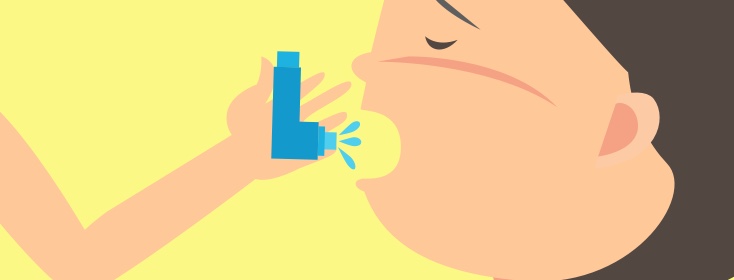What Does A Respiratory Therapist Do?
I am a respiratory therapist. I became acclimated to this profession after meeting many respiratory therapists as an asthmatic child during the 1980s. My perception was they were caring people who entertained while giving breathing treatments. I later decided this would make a good career, and learned first hand what they really do.
What does a respiratory therapist do?
Well, they did entertain me. Imagine being a kid stuck in a hospital bed. My dad worked, and I had four brothers, so my mom couldn’t spend all day with me (even though she probably wanted to). The nurses were kind and friendly, but they’d come in, give me medicine, fiddle with my IV, and rush off to some other task.
So that left respiratory therapists. I knew they were going to visit me every four hours because I needed my breathing treatments -- I was usually short of breath when they arrived. I’d watch as they’d squirt medicine into the nebulizer, connect tubing from the nebulizer to a flowmeter, and turn it on. The nebulizer produced a soft whir and white mist. It was handed to me.
Then there were the rules.
“Put the mouthpiece in your mouth and breathe normal,” they’d say. “Sit up. Make sure your stomach goes out when you inhale, and in when you exhale. Make sure you concentrate on your breathing.”
I’d listen, sit up, concentrate, and watch as the mist disappeared when I inhaled.
“When you inhale the medicine from the nebulizer goes into your airways and opens them up.”
After several minutes the treatment was finished and my breathing was easy.
Respiratory therapists are teachers
Yet they were entertainers. While the treatment was going, they’d sit next to me on the bed and watch TV with me. They’d ask me about my family, or tell me about theirs. We’d talk about baseball or baseball cards, topics interesting to me. They’d talk about topics interesting to them, too.
One day a therapist came into my room just after my mom left. I was looking out the window. She gave me my breathing treatment, and dealt out some cards that were on my bedside stand. We played a game of War. Even after the treatment was finished we continued our game.
My dad encouraged me to become a respiratory therapist. He said I’d have empathy for my patients. I listened to my dad. Now I’m the entertainer. Now I’m the educator. And, of course, as an added bonus, I know what it’s like to be the patient.
Respiratory therapists are healthcare professionals
I visit my patients every few hours. I start breathing treatments, explain the rules, and answer questions. I educate as necessary, and when that’s done we engage in conversation. They talk about their families and ask me about mine. Sometimes we share picture. Sometimes we just watch TV.
This is the side of our profession people see. Yet sometimes I get asked, “What else do you do? I mean, I’m sure you don’t just do breathing treatments.”
So, what else do we do? Well, we do a lot of walking around, that’s what we do. We are ubiquitous, in that we are seemingly everywhere in the hospital all at once. We take care of patients throughout the entire hospital, from adults admitted to patient floors, to kids in the emergency room, to newborn infants in OB.
We are a part of the patient care team, working alongside nurses and doctors. We are the lung and airway experts in the hospital setting, and are often called upon for our assistance and advice.
Respiratory therapists are responders
Is a patient having trouble breathing? We are among the first to the head of the bed. We give breathing treatments to open airways. We draw blood from arteries to check oxygen levels. We set up supplemental oxygen using nasal cannulas or masks to make breathing easier.
We manage noninvasive positive pressure machines (like BiPAP). We hook patients to these using masks over their mouths and noses. A pressure assists with inhalation, and keeps airways open during exhalation so the next breath comes easier. And we coach through the whole process so the whole thing is well tolerated.
Is a patient working too hard to breathe? Is he pooping out? Did he stop breathing? Did his heart stop? We are called to the head of the bed to manage the airway. If necessary, we set up and manage ventilators. These are machines that breathe for patients, allowing their lungs to rest, buying time for doctors to work their magic.
I have been a respiratory therapist for 20 years now. My perception when I started was a little off, as we do much more than just breathing treatments. Both sides of this profession, the seen and the unseen, I find to be fun and challenging. It’s a good career. I get to meet some wonderful people. So, now you know what a respiratory therapist does.

Join the conversation